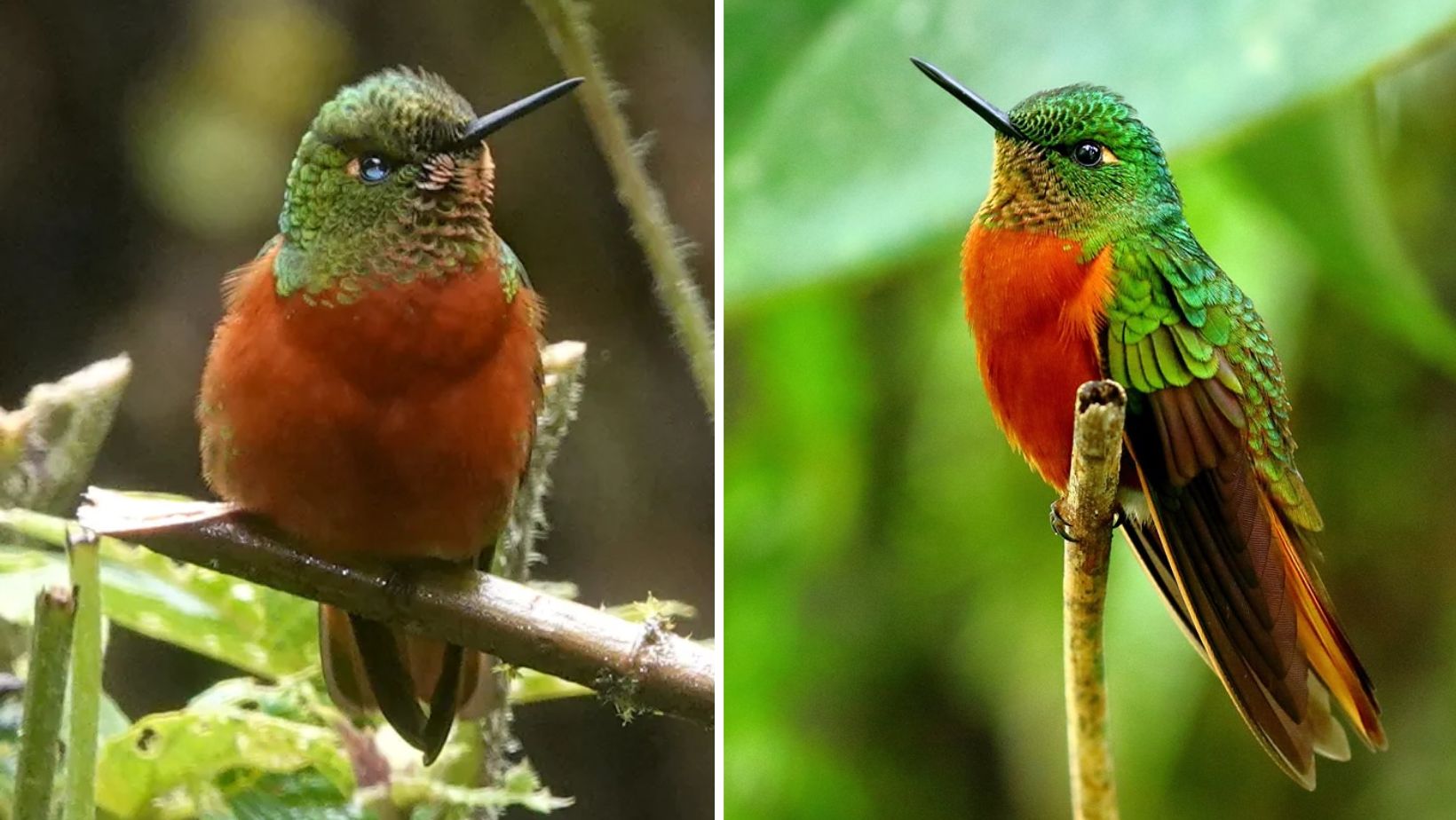
A bird who is often seen safeguarding its preferred flower patch or feeder, vigorously chasing away any other bird that dares to approach.
Meet the Chestnut-breasted Coronet
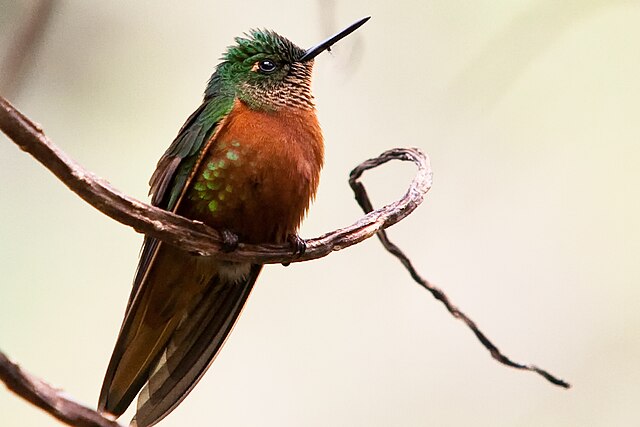
“Chestnut-breasted Coronet” by Julie Edgley is licensed under CC BY-SA 2.0.
The Chestnut-breasted Coronet (Boissonneaua matthewsii) is a type of hummingbird belonging to the “brilliants” group, found within the Heliantheini tribe in the subfamily Lesbiinae. Both males and females exhibit similar characteristics. Adult males feature iridescent green upperparts, head, and gorget. The central tail feathers showcase shades ranging from coppery-green to bronze-green, while the remaining rectrices are adorned with a rufous hue, edged and tipped in bronze-green. The underparts, including underwing and undertail feathers, display a rich chestnut-rufous coloration. The head boasts a metallic green sheen, complemented by a rather thick and straight bill. Dark brown eyes are set against the backdrop of the head. The legs and feet are short and pale pink, with nearly inconspicuous pale cinnamon tufts on the legs.
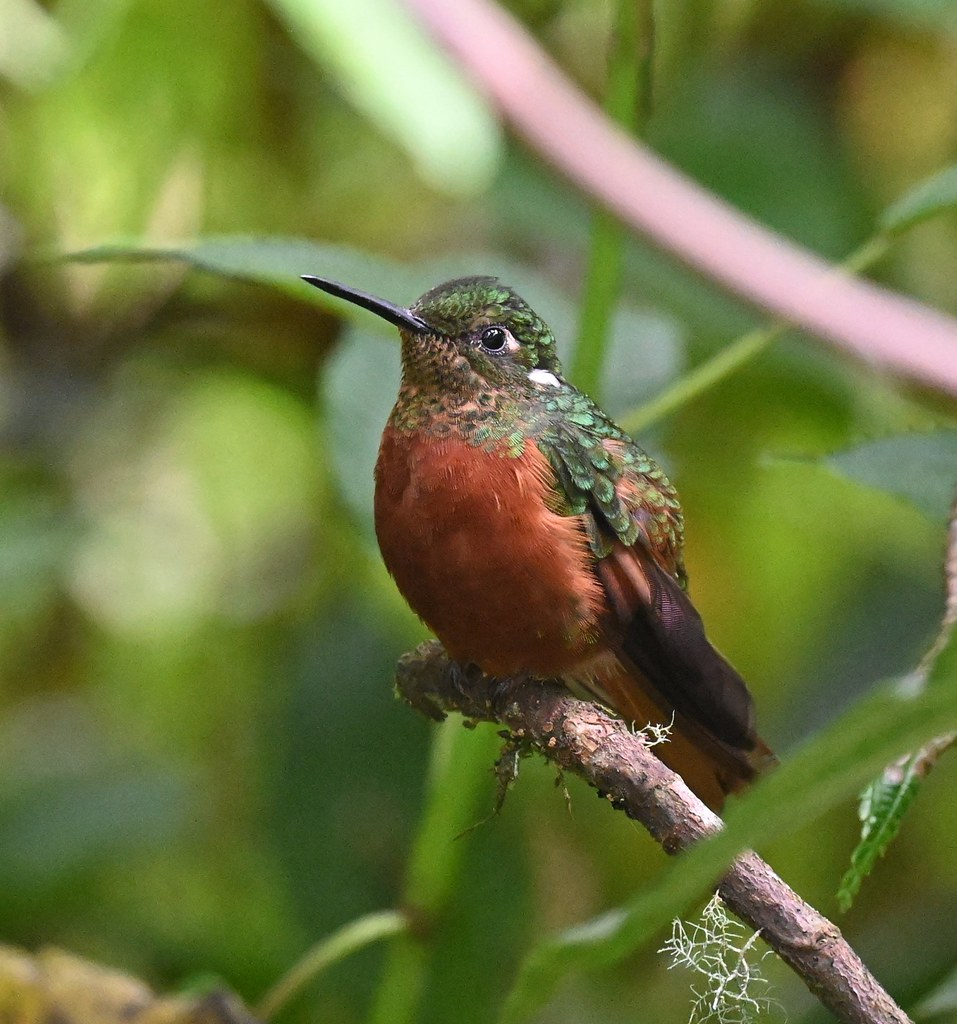
“Chestnut-breasted Coronet” by Wildreturn is licensed under CC BY 2.0.
Females closely resemble males, with the addition of subtle cinnamon speckles on the green throat.
Immature individuals exhibit more expansive green areas on the underparts. On the upperparts, especially the rump, feathers are outlined in cinnamon. They attain breeding maturity in their second year.
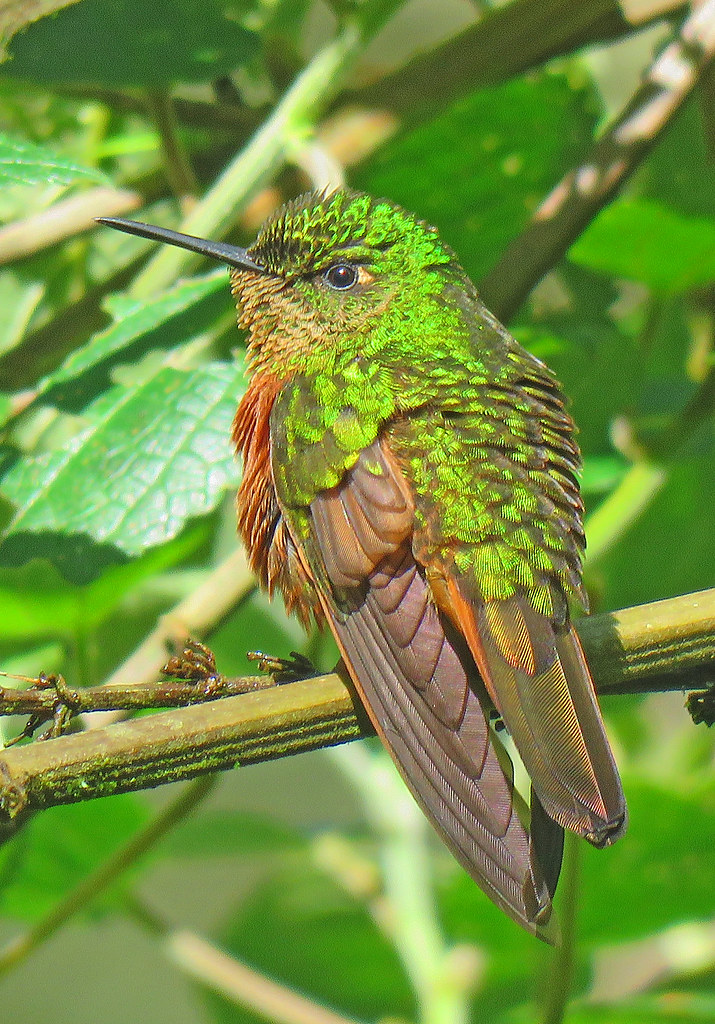
“Chestnut-breasted Coronet – Boissonneaua matthewsii, Guango Lodge, Papallacta, Ecuador, August 25, 2021” by Judy Gallagher is licensed under CC BY 2.0.
The Chestnut-breasted Coronet inhabits Andean forests in the southeastern part of Colombia, Ecuador, and Peru.
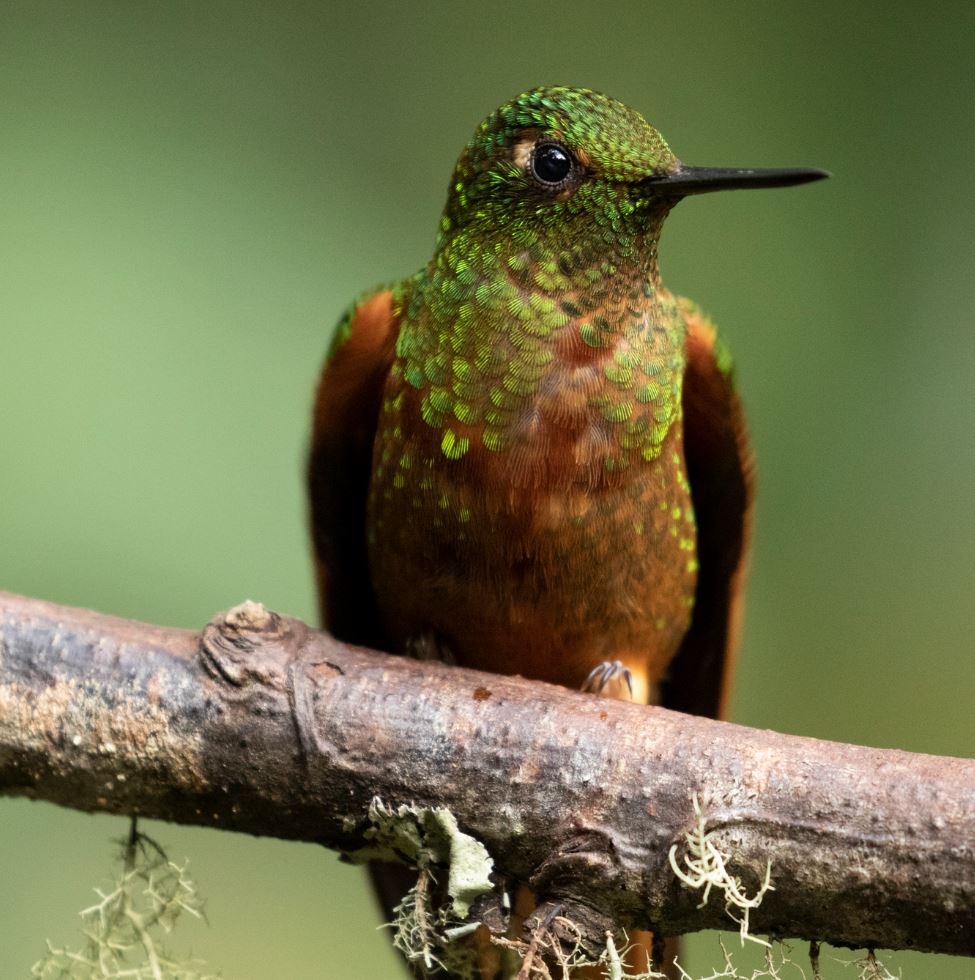
“chestnut-breasted coronet” by Santiago Ron is licensed under CC BY 4.0. (cropped)
The Chestnut-breasted Coronet prefers the canopy of humid forests, typically found at elevations up to 2000 meters, occasionally reaching higher altitudes, such as 3000 meters in Peru. This species predominantly resides within forested areas and is less frequently spotted at edges or in more open vegetated environments.
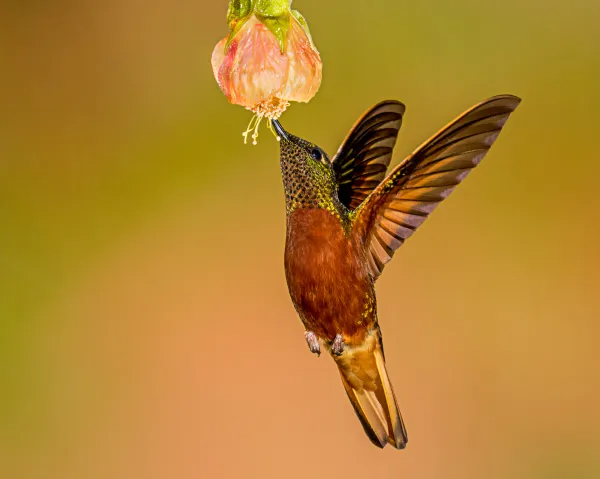
“Chestnut-breasted Coronet (22244413538)” by Andy Morffew from Itchen Abbas, Hampshire, UK is licensed under CC BY 2.0.
Feeding on nectar at canopy level, the Chestnut-breasted Coronet establishes foraging territories around flower clusters and guards them vigilantly. At times, multiple individuals feed together on flowering trees, often clinging to the blossoms to facilitate feeding. This bird also engages in hawking flying insects from elevated perches, capturing flies and wasps.
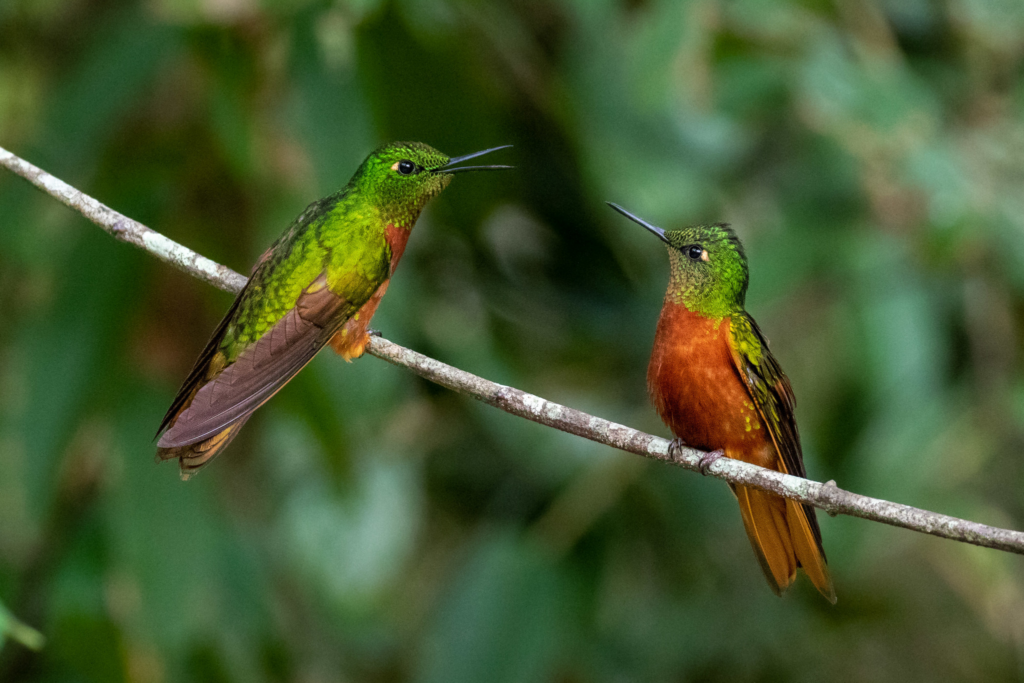
“chestnut-breasted coronet” by thibaudaronson is licensed under CC BY-SA 4.0.
When vocalizing, the Chestnut-breasted Coronet emits high-pitched chirps and whistles. Short calls are shared by both sexes from perches and serve to demarcate feeding territories. Aggressive interactions lead to rapid chattering as a chase call during defensive encounters. Shrill alarm calls often accompany aerial attacks. Their song is concise, consisting of monosyllabic sounds.
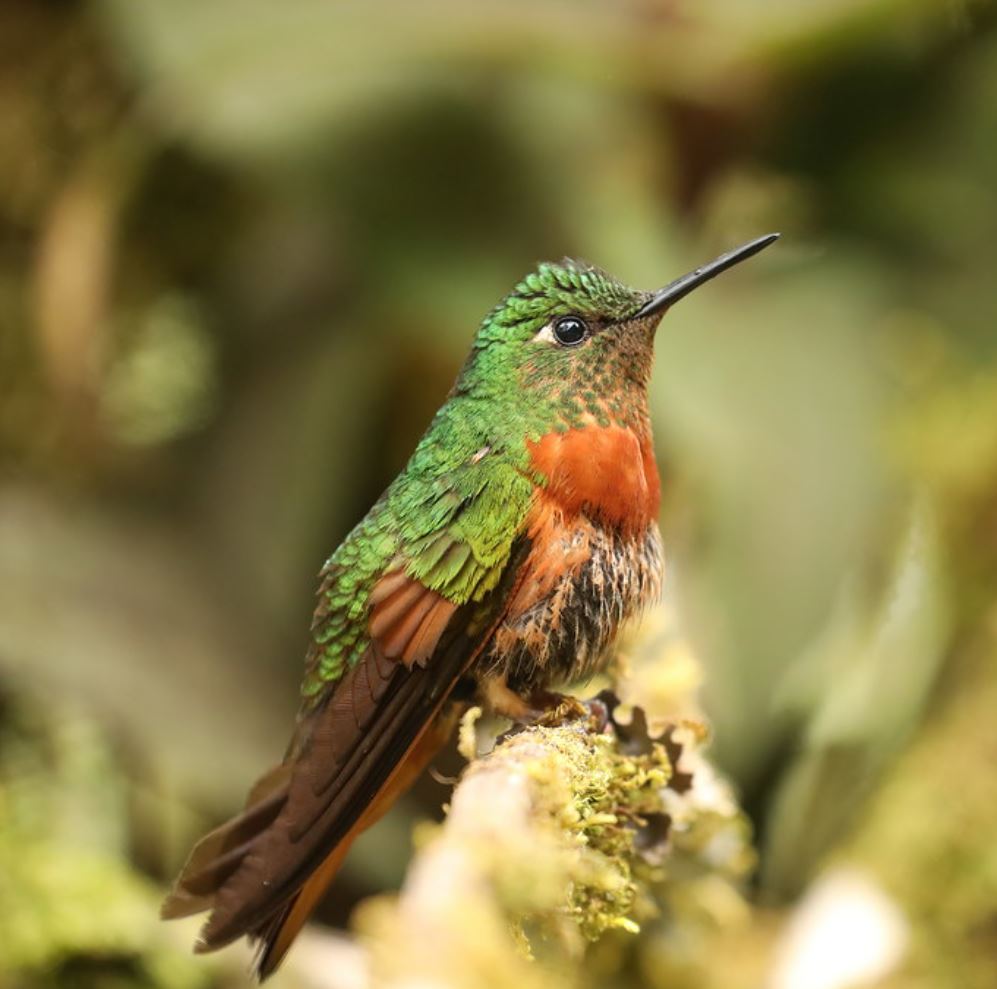
“Chestnut-breasted Coronet” by Chuck Gates is licensed under CC BY 2.0. (cropped)
Members of this genus exhibit territorial and fiercely combative behavior, staunchly protecting their nectar resources from elevated perches. In the presence of predators or intruders, warning vocalizations are sounded, and aerial diving attacks are launched. Physical clashes can occur, leading to birds locking in claw grips and descending to the ground.
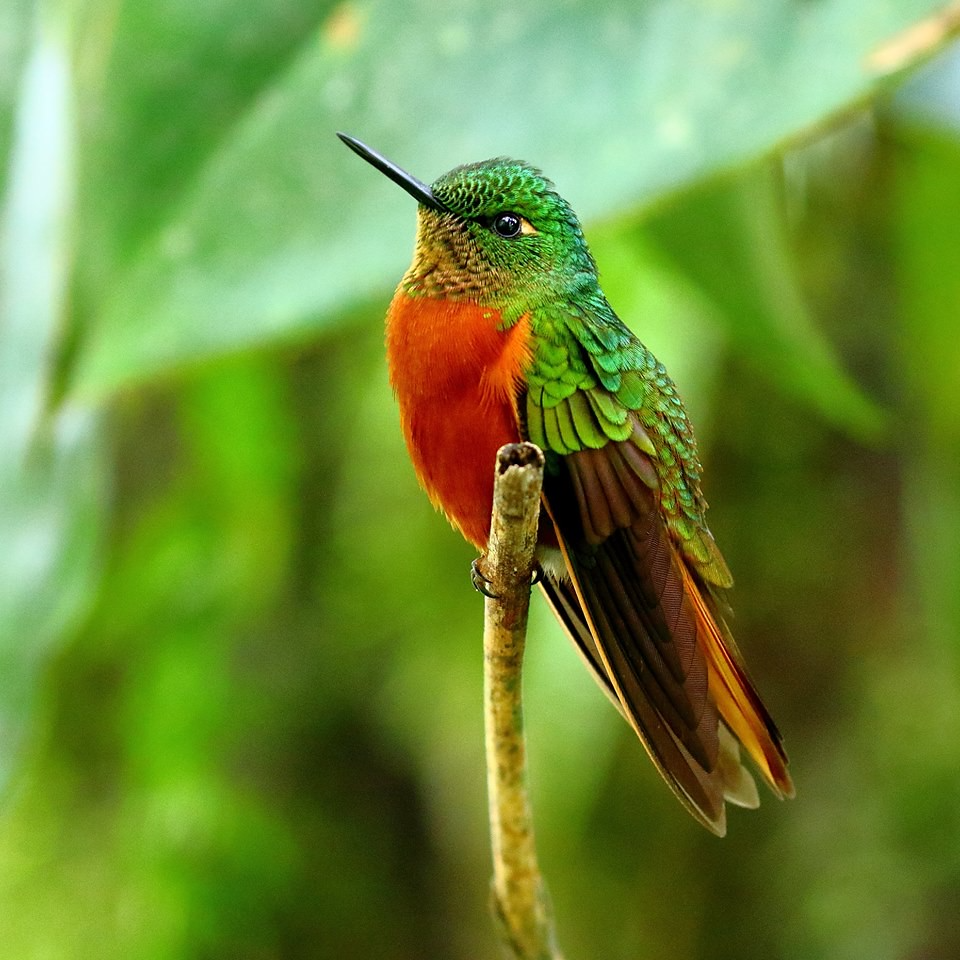
“Chestnut-breasted Coronet” by dfaulder is licensed under CC BY 2.0.
Like other Trochilidae species, the Chestnut-breasted Coronet is adept at hovering during feeding on nectar sources and flowers. It performs hovering maneuvers both forward and backward, utilizing rapid wing beats. Chestnut-breasted Coronets remain sedentary within their established range.
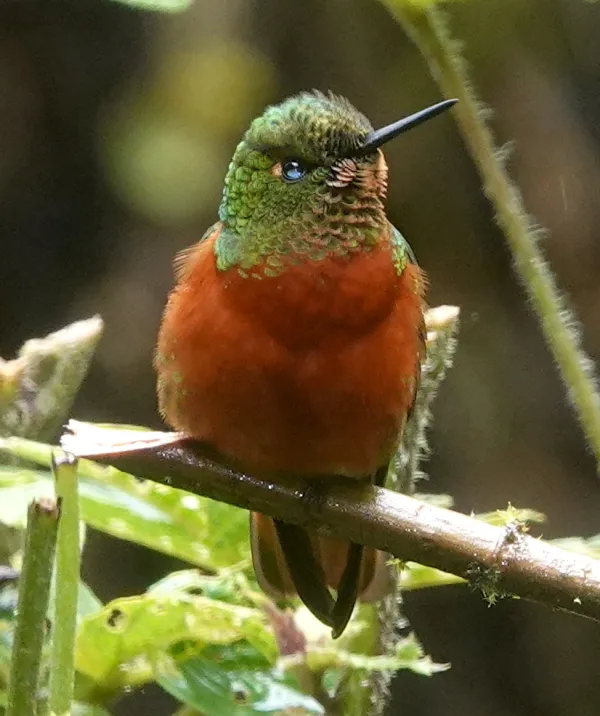
“chestnut-breasted coronet” by desertnaturalist is licensed under CC BY 4.0.
Details regarding the nesting behavior of the Chestnut-breasted Coronet remain limited. The nest, constructed from moss and lichens, takes the form of a cup. Females lay two eggs and undertake incubation independently.
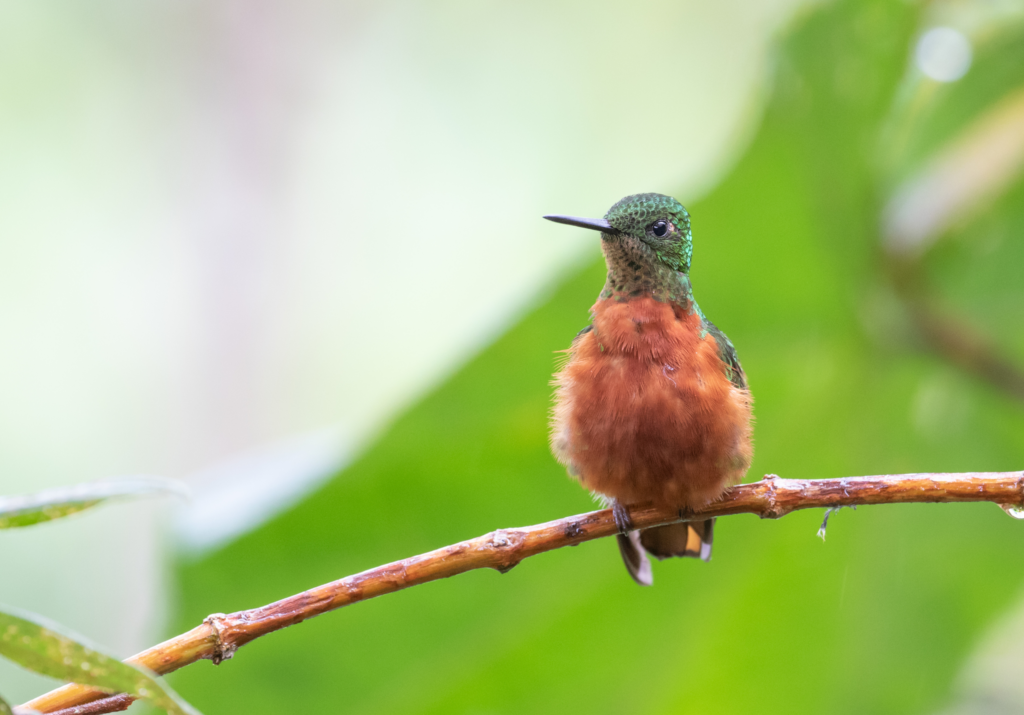
“chestnut-breasted coronet” by Cullen Hanks is licensed under CC BY 4.0.
The Chestnut-breasted Coronet is relatively abundant within its designated range. Predation risks primarily involve snakes and birds of prey.
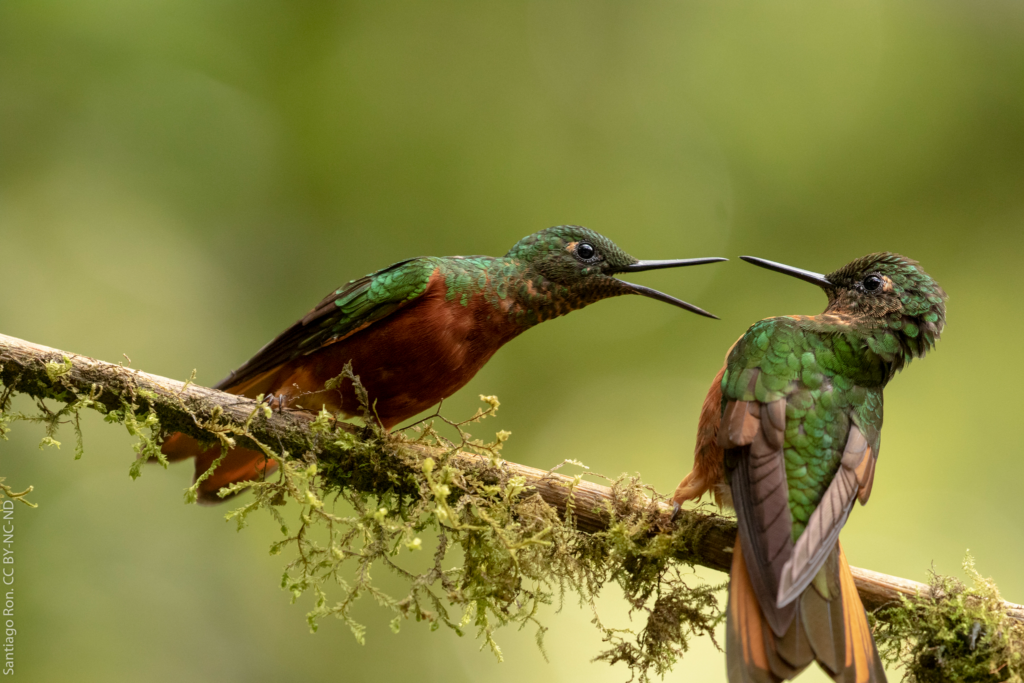
“chestnut-breasted coronet” by Santiago Ron is licensed under CC BY 4.0.
Why not watch this bird in its natural environment:
This article uses material from Wikipedia.org which is licensed under the GNU Free Documentation License via Copyright Wikipedia. Images on this page are the sole property of the photographers (unless marked as Public Domain). Please read the license and or contact the photographers directly before using them for any purpose. Thank you all.
Dressed Like A Giant Bumblebee, He Is The Only One In His Range Wearing Such A Stunning Swept Back Crest!
Please SHARE this article with all your bird-loving friends and family.

